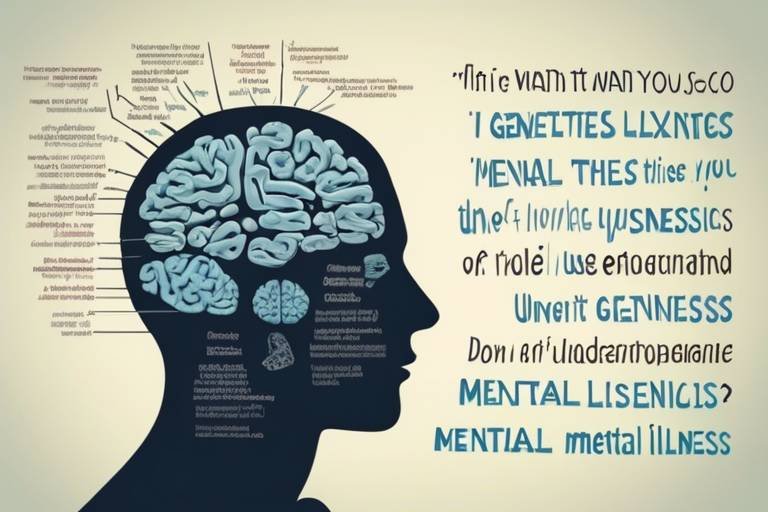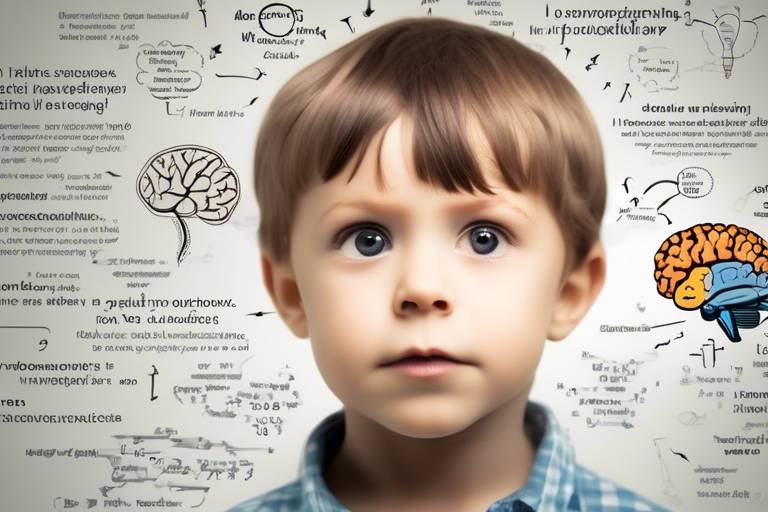Exploring the Science of Collective Intelligence
Have you ever wondered how a group of individuals can come together to solve complex problems more effectively than a single expert? This fascinating phenomenon is known as collective intelligence, and it plays a crucial role in various aspects of our lives, from decision-making in organizations to the way nature functions. Collective intelligence refers to the shared or group intelligence that emerges from collaboration and competition among individuals. It’s like a symphony where different instruments come together to create beautiful music, showcasing how diverse perspectives can lead to innovative solutions. Understanding this concept is not just an academic exercise; it’s essential for grasping its impact on society and technology today.
The implications of collective intelligence stretch across numerous fields, including biology, technology, and social dynamics. In biology, for example, we see how ant colonies operate with a level of efficiency that surpasses any single ant's capability. In technology, platforms like Wikipedia and crowdsourcing initiatives demonstrate how collective efforts can yield vast amounts of knowledge and creativity. As we delve deeper into this topic, we'll explore the underlying principles that govern collective intelligence, its historical evolution, and its applications in modern society.
But what makes collective intelligence so powerful? It's the synergy created when individuals contribute their unique skills and knowledge, resulting in outcomes that are often greater than the sum of their parts. Think about it: when people collaborate, they can brainstorm ideas, challenge each other's assumptions, and arrive at conclusions that might have been impossible to reach alone. This collaborative spirit is not just limited to humans; it can also be observed in nature's intricate systems, where species work together to survive and thrive.
As we explore the science of collective intelligence, we will also touch on its psychological aspects, examining how group dynamics and social influences play a significant role in shaping collective behaviors. Moreover, we'll look at the future of collective intelligence, especially in light of advancements in artificial intelligence (AI). The integration of AI with collective intelligence systems could revolutionize the way we make decisions, but it also raises important ethical considerations that we must address.
In the upcoming sections, we will embark on a journey through the history of collective intelligence, starting from early theories and contributions by thinkers like Aristotle and Hobbes, to modern applications in technology. We'll also take a closer look at the remarkable examples of collective intelligence in nature, such as swarm intelligence in bees and the collective behavior of social animals. So, buckle up as we dive into the captivating world of collective intelligence!
- What is collective intelligence? Collective intelligence refers to the shared intelligence that emerges from the collaboration and competition of individuals within a group.
- How does collective intelligence work in nature? In nature, species like ants and bees exhibit collective intelligence through coordinated behaviors that enhance survival and efficiency.
- What are the applications of collective intelligence in technology? Collective intelligence is applied in various fields such as artificial intelligence, crowdsourcing, and social media platforms, enhancing problem-solving and innovation.
- What are the challenges associated with collective intelligence? Challenges include misinformation, groupthink, and ethical considerations related to decision-making processes.
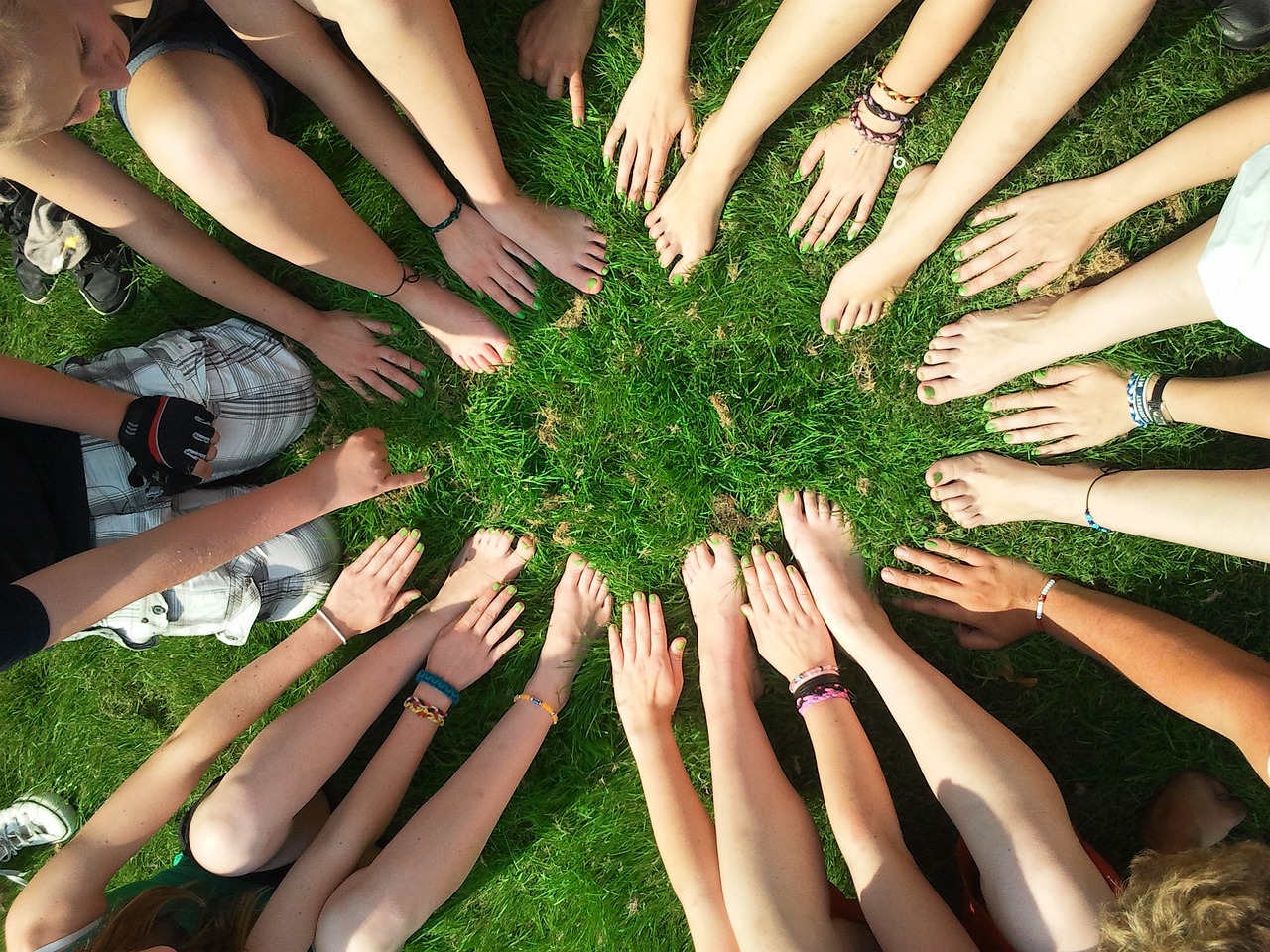
The Definition of Collective Intelligence
Collective intelligence is a captivating concept that refers to the shared or group intelligence that emerges when individuals collaborate and compete. It's not just about pooling knowledge; it's about the synergy that arises when diverse perspectives and skills come together to tackle challenges. Imagine a group of musicians jamming together. Each musician brings their unique style and expertise, but when they play together, they create a harmonious sound that’s greater than the sum of its parts. This is the essence of collective intelligence.
Understanding collective intelligence is crucial for exploring its impact on various domains, including society and technology. It plays a pivotal role in decision-making processes, problem-solving, and even innovation. For instance, when a team brainstorms ideas, the diversity of thoughts can lead to more creative solutions than an individual could devise alone. This phenomenon is largely driven by the interactions and dynamics among group members, which can either enhance or hinder the collective outcome.
There are several key characteristics that define collective intelligence:
- Collaboration: The act of working together towards a common goal, leveraging each individual's strengths.
- Diversity: A mix of different perspectives, backgrounds, and skills that enrich the group's potential.
- Emergence: The idea that complex outcomes can arise from simple interactions among individuals.
- Adaptation: The ability of the group to adjust and evolve based on feedback and changing circumstances.
These characteristics highlight the power of collective intelligence in various contexts, from social movements to technological advancements. In today's interconnected world, harnessing collective intelligence can lead to groundbreaking innovations and solutions to complex problems. However, it also raises questions about how we can effectively manage and cultivate these dynamics to ensure positive outcomes.
As we further explore this fascinating concept, it's essential to consider how collective intelligence manifests in different fields and what implications it holds for our future. Whether in nature, technology, or social structures, the principles of collective intelligence are shaping our world in profound ways.

The History of Collective Intelligence
The study of collective intelligence has a rich and varied history, tracing its roots back to ancient philosophers and evolving through various disciplines over the centuries. Understanding this historical context is essential for grasping how collective intelligence has shaped our modern world. From the early musings of thinkers like Aristotle to contemporary applications in technology, the journey has been fascinating.
In ancient times, philosophers such as Aristotle and Thomas Hobbes began exploring the dynamics of human behavior and social organization. Aristotle, for instance, believed that humans are inherently social beings, and he emphasized the importance of community in achieving the common good. His ideas laid the groundwork for understanding how individuals can work together to create something greater than themselves.
Fast forward to the 19th century, where the concept of collective intelligence began to take on a more defined shape. Alexis de Tocqueville, in his seminal work "Democracy in America," highlighted how collective decision-making processes in democratic societies could lead to better outcomes than decisions made by individuals alone. These early insights paved the way for later theorists who would delve deeper into the mechanics of group dynamics.
As the 20th century approached, the field of psychology began to contribute significantly to our understanding of collective intelligence. The Gestalt psychology movement, which focused on how individuals perceive patterns and wholes rather than isolated parts, provided a framework for understanding how groups function. This approach emphasized that the collective experience could lead to insights that individuals might miss when acting alone.
One of the pivotal moments in the study of collective intelligence came with the publication of James Surowiecki's book, "The Wisdom of Crowds," in 2004. Surowiecki argued that under the right conditions, groups could make better decisions than even their most knowledgeable members. This idea became a cornerstone for understanding the effectiveness of collective intelligence in various domains, from finance to public policy.
Surowiecki's concept of the Wisdom of Crowds suggests that diversity within a group enhances its decision-making capabilities. When individuals with different perspectives and expertise come together, they can collectively analyze problems and arrive at solutions that are often more effective than those generated by a single expert. This principle has been applied in various fields, including economics, sociology, and even environmental science, showcasing the power of collaborative efforts.
As we moved into the 21st century, the rise of technology revolutionized the way collective intelligence is harnessed. The advent of the internet and social media platforms allowed for unprecedented levels of collaboration and information sharing. Crowdsourcing emerged as a powerful tool, enabling organizations to tap into the collective knowledge of thousands or even millions of individuals. This shift has transformed industries, from software development to scientific research, where diverse contributions can lead to groundbreaking discoveries.
In summary, the history of collective intelligence is a tapestry woven from contributions across various fields and eras. It reflects humanity's enduring quest to understand how we can better work together to solve complex problems and innovate for the future. The insights gained from past thinkers continue to inform our approach to collective intelligence today, proving that the whole can indeed be greater than the sum of its parts.
- What is collective intelligence? Collective intelligence refers to the shared or group intelligence that emerges from collaboration and competition among individuals.
- Who are some key figures in the history of collective intelligence? Important figures include Aristotle, Thomas Hobbes, James Surowiecki, and Alexis de Tocqueville.
- How has technology impacted collective intelligence? Technology has enabled greater collaboration and information sharing, leading to innovations like crowdsourcing.

Early Theories and Contributions
The exploration of collective intelligence dates back to ancient philosophical inquiries, where early thinkers began to unravel the complexities of human behavior and social organization. Aristotle, one of the most influential philosophers of his time, emphasized the importance of the collective in his works. He argued that humans are inherently social beings, and their ability to reason collectively leads to better decision-making. Aristotle's notion of the "polis," or city-state, highlighted how individuals could come together to create a more effective governance structure, illustrating the early seeds of what we now refer to as collective intelligence.
Moving forward in time, Thomas Hobbes introduced a contrasting perspective in the 17th century. He viewed human beings as self-interested and competitive, suggesting that collective intelligence could emerge from a social contract where individuals relinquish some personal freedoms for the greater good. This idea laid the groundwork for understanding how cooperation and competition could coexist, ultimately fostering a more profound understanding of group dynamics.
As the study of collective intelligence progressed, the 20th century brought significant theoretical advancements. During this period, scholars began to examine how groups could outperform individuals in decision-making scenarios, a concept that would later be popularized by James Surowiecki in his book, The Wisdom of Crowds. Surowiecki's work synthesized earlier theories and provided empirical evidence supporting the idea that diverse groups, when given the right conditions, could indeed arrive at better solutions than any single expert could achieve alone.
To further illustrate the evolution of thought surrounding collective intelligence, we can look at some key figures and their contributions in a table:
| Thinker | Contribution | Time Period |
|---|---|---|
| Aristotle | Emphasized the role of social organization in decision-making. | 384–322 BC |
| Thomas Hobbes | Introduced the idea of social contracts influencing collective behavior. | 1588–1679 |
| James Surowiecki | Popularized the concept of the wisdom of crowds. | 2004 |
These early theories not only shaped academic discourse but also paved the way for practical applications in various fields, such as economics, sociology, and psychology. The interplay between individual cognition and group dynamics continues to be a rich area of study, demonstrating that the roots of collective intelligence run deep in human history.
As we delve deeper into the implications of these early contributions, it becomes evident that understanding collective intelligence is not merely an academic exercise; it is a vital component of navigating the complexities of modern society. The collaborative efforts of individuals can lead to groundbreaking innovations and solutions to pressing global challenges, making it essential to continue exploring these foundational theories.
- What is collective intelligence? Collective intelligence refers to the shared or group intelligence that emerges from collaboration and competition among individuals.
- Who were the early thinkers that contributed to the concept of collective intelligence? Key figures include Aristotle, Thomas Hobbes, and James Surowiecki, each providing unique insights into group dynamics and decision-making.
- Why is understanding collective intelligence important? Understanding collective intelligence helps us navigate social dynamics, enhance decision-making processes, and foster collaboration in various fields.

The Wisdom of Crowds
The concept of is a groundbreaking idea that suggests that large groups of people can collectively make better decisions than individuals, even experts. This principle was popularized by James Surowiecki in his book of the same name, where he argues that under the right circumstances, the aggregation of information in groups can lead to remarkably accurate conclusions. Imagine a vast ocean of knowledge, where each drop represents an individual's perspective, and when combined, they create a powerful wave of insight. Isn't it fascinating how collective insights can sometimes outshine the brilliance of a single mind?
At its core, the wisdom of crowds relies on three key conditions: diversity of opinion, independence of thought, and decentralization. When these elements are present, the collective judgment becomes a potent tool for problem-solving and decision-making. For instance, consider a scenario where a group of individuals is asked to estimate the weight of a cow. While each person may have a different estimate, the average of all their guesses is often surprisingly close to the actual weight. This phenomenon illustrates how diverse perspectives can lead to a more accurate understanding of a situation.
To further illustrate this concept, let's break down the essential components that contribute to the wisdom of crowds:
- Diversity of Opinion: A mix of viewpoints ensures that various angles are considered, leading to a more comprehensive analysis.
- Independence of Thought: When individuals think independently, it reduces the risk of groupthink, allowing for unique insights.
- Decentralization: Empowering individuals to contribute from their own knowledge base enhances the richness of the information gathered.
However, it’s essential to recognize that not all crowds are wise. Conditions such as social pressure, misinformation, or lack of proper communication can lead to poor decision-making. For example, during the infamous Stock Market Crash of 1929, a herd mentality led many investors to panic sell, resulting in catastrophic consequences. This highlights the importance of understanding the dynamics at play within groups and ensuring that the right conditions are fostered to harness their collective intelligence effectively.
Moreover, the wisdom of crowds has practical applications across various fields, from business to politics. Companies like Google and Amazon utilize crowd-sourced data to enhance their services and make informed decisions. In politics, platforms that aggregate public opinion can provide valuable insights into voter sentiment, helping candidates tailor their messages more effectively. The potential for harnessing collective intelligence is vast and continues to evolve, especially with advancements in technology.
In conclusion, the wisdom of crowds serves as a powerful reminder of the strength found in collaboration. By embracing diverse perspectives and fostering an environment that encourages independent thought, we can unlock the incredible potential of collective intelligence. Just like a symphony orchestra, where each musician plays a different instrument yet together creates beautiful music, the wisdom of crowds can lead us to harmonious and impactful decisions.
- What is the wisdom of crowds? The wisdom of crowds is the idea that large groups of people can collectively make better decisions than individuals, particularly when certain conditions are met.
- What conditions are necessary for the wisdom of crowds to be effective? The key conditions include diversity of opinion, independence of thought, and decentralization.
- Can crowds lead to poor decisions? Yes, if conditions like social pressure or misinformation are present, crowds can make poor decisions.
- How is the wisdom of crowds applied in real life? It is applied in various fields, including business, politics, and social sciences, often through data aggregation and analysis.

The Wisdom of Crowds
is a captivating concept that illustrates how a diverse group of individuals can collectively arrive at better decisions than any single expert could. This principle, popularized by James Surowiecki in his book of the same name, emphasizes that under the right conditions, the aggregation of information from many individuals leads to surprisingly accurate conclusions. Imagine a group of people guessing the number of jellybeans in a jar; while each person's guess may be far off, the average of all guesses can be remarkably close to the actual number. This phenomenon is not just a quirky party trick; it has profound implications across various fields, from economics to political science.
The effectiveness of the wisdom of crowds hinges on several key factors. Firstly, diversity within the group is crucial. When individuals bring different perspectives, experiences, and knowledge to the table, the collective intelligence is enriched. Secondly, independence is vital; if individuals influence each other's decisions too heavily, the group is likely to converge on incorrect answers rather than exploring a range of possibilities. Lastly, decentralization plays a significant role, allowing individuals to operate independently rather than being swayed by a central authority.
To better understand how the wisdom of crowds operates, consider the following scenarios where it has been effectively applied:
- Market Predictions: In financial markets, collective predictions from numerous investors often outperform individual analysts.
- Public Opinion Polls: Aggregating opinions from a broad demographic can yield insights into societal trends and electoral outcomes.
- Crowdsourcing Solutions: Platforms like Wikipedia or open-source software development leverage the collective input of thousands to create high-quality content and products.
However, it's essential to recognize that the wisdom of crowds isn't foolproof. There are instances where groups can fall prey to groupthink, leading to poor decisions due to a lack of critical analysis. Furthermore, the presence of misinformation can skew collective judgments, making it imperative to foster an environment where independent thought and diverse opinions are encouraged. As we navigate the complexities of modern society, understanding the dynamics of collective intelligence can empower us to harness its potential while mitigating its risks.
Q: What is the wisdom of crowds?
A: The wisdom of crowds refers to the phenomenon where the collective judgment of a group leads to better decision-making than that of an individual expert.
Q: What factors contribute to effective collective intelligence?
A: Key factors include diversity, independence, and decentralization within the group.
Q: Can the wisdom of crowds fail?
A: Yes, it can fail due to groupthink or the influence of misinformation, which can distort collective judgment.
Q: How is the wisdom of crowds applied in real life?
A: It is applied in various fields, including market predictions, public opinion polls, and crowdsourcing platforms.
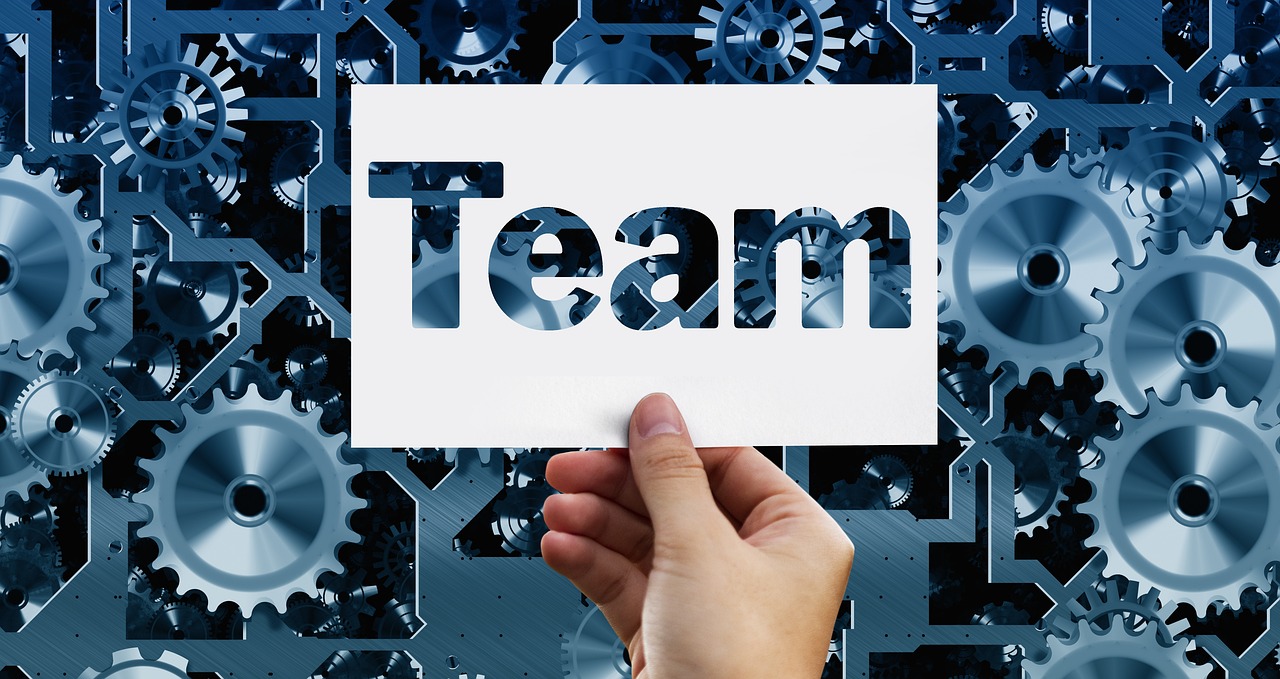
highlights how diverse groups can make better decisions than individuals. This principle is pivotal in understanding collective intelligence's effectiveness.
Collective intelligence refers to the shared or group intelligence that emerges from collaboration and competition among individuals. Understanding this concept is crucial for exploring its impact on society and technology.
The study of collective intelligence has evolved over time, with roots in various disciplines. This section explores key historical milestones and figures that have shaped our understanding of group dynamics and intelligence.
Early thinkers like Aristotle and Hobbes laid the groundwork for collective intelligence theories. Their insights into human behavior and social organization provide a foundation for contemporary studies.
James Surowiecki's concept of The Wisdom of Crowds highlights how diverse groups can make better decisions than individuals. This principle is pivotal in understanding collective intelligence's effectiveness. When a group of people brings together their unique perspectives and knowledge, the result is often a more informed and balanced decision-making process.
One might wonder, why is it that groups can outperform individuals? The answer lies in the diversity of thought. When individuals with different backgrounds, experiences, and expertise collaborate, they can challenge each other's assumptions and provide insights that a single person may overlook. This phenomenon can be illustrated through various examples:
- Problem-Solving: Diverse teams are more adept at tackling complex problems due to their varied approaches.
- Creativity: A range of viewpoints fosters innovation and creative solutions that might not emerge in homogenous groups.
- Bias Reduction: Group discussions can help mitigate individual biases, leading to more balanced outcomes.
Moreover, the effectiveness of collective intelligence can be quantified through studies that show how groups outperform individuals in tasks requiring judgment and decision-making. For instance, research has indicated that when it comes to estimating numerical values or predicting outcomes, groups often converge on more accurate answers than any single member could provide. This is not just a coincidence; it’s a reflection of the power of collaboration.
With advancements in technology, collective intelligence has found applications in fields like artificial intelligence and crowdsourcing, enhancing problem-solving and innovation capabilities in various industries.
The psychological factors influencing collective intelligence are significant. This section examines how group dynamics, social influence, and individual cognition contribute to the emergence of collective intelligence.
Nature showcases remarkable examples of collective intelligence, from ant colonies to flocking birds. This section explores how these natural systems operate and their implications for human understanding of group behavior.
Swarm intelligence, observed in species like bees and fish, demonstrates how simple rules can lead to complex group behavior. Understanding these mechanisms can inspire innovative solutions in various fields.
Social animals exhibit fascinating collective behaviors that enhance survival and efficiency. This section discusses the implications of these behaviors for understanding human social structures and interactions.
As technology continues to evolve, the future of collective intelligence holds immense potential. This section speculates on upcoming trends and challenges in harnessing collective intelligence for societal benefit.
The integration of artificial intelligence with collective intelligence systems could revolutionize decision-making processes. This subsection explores the potential benefits and ethical considerations of AI-enhanced collective intelligence.
While collective intelligence offers numerous advantages, it also poses challenges, including misinformation and groupthink. This subsection discusses the ethical implications and responsibilities associated with harnessing collective intelligence.
- What is collective intelligence? Collective intelligence refers to the shared intelligence that arises from collaboration among individuals.
- How does diversity impact decision-making? Diverse groups tend to make better decisions because they bring various perspectives, which leads to more informed outcomes.
- Can collective intelligence be applied in technology? Yes, collective intelligence is used in fields like artificial intelligence and crowdsourcing to enhance problem-solving and innovation.
- What are some examples of collective intelligence in nature? Examples include ant colonies and flocking birds, which exhibit complex behaviors through simple rules.
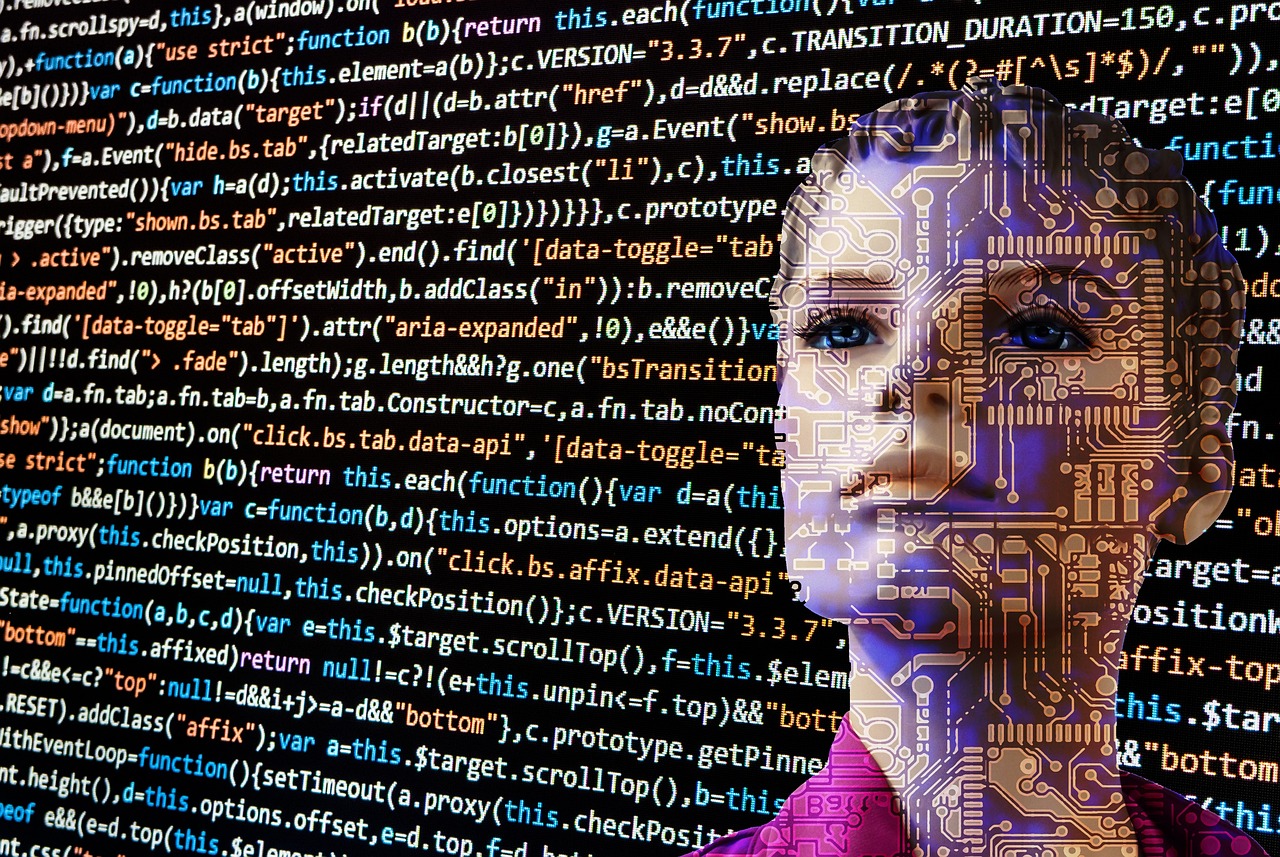
Modern Applications in Technology
In today's fast-paced world, the concept of collective intelligence is more relevant than ever, especially in the realm of technology. With the rise of the internet and digital platforms, we have witnessed a remarkable transformation in how individuals collaborate and share knowledge. This transformation has given birth to numerous modern applications that harness the power of collective intelligence, leading to groundbreaking innovations across various sectors.
One of the most notable applications is in the field of artificial intelligence (AI). AI systems are increasingly being designed to learn from collective data inputs, allowing them to make more informed decisions. For example, machine learning algorithms can analyze vast amounts of data from diverse sources, identifying patterns and trends that a single individual might miss. This ability to aggregate knowledge enhances the accuracy and effectiveness of AI applications, making them invaluable tools in fields such as healthcare, finance, and marketing.
Another exciting application is found in crowdsourcing. Platforms like Wikipedia and Kickstarter exemplify how collective intelligence can be utilized to gather information and fund creative projects. Wikipedia, for instance, relies on the contributions of millions of users worldwide to create a comprehensive repository of knowledge. This collaborative approach not only democratizes information but also ensures that it remains up-to-date and relevant. Similarly, Kickstarter allows entrepreneurs to present their ideas to the public, enabling backers to fund projects they believe in. This not only provides financial support but also validates ideas through community interest.
Moreover, the rise of social media has transformed how we perceive and engage with collective intelligence. Platforms like Twitter and Reddit enable users to share insights, opinions, and experiences, creating a rich tapestry of knowledge that can be tapped into. For instance, during crises such as natural disasters, social media becomes a powerful tool for real-time information sharing. Users can report on conditions, offer assistance, and coordinate rescue efforts, showcasing the remarkable potential of collective intelligence in urgent situations.
In the realm of business, companies are increasingly leveraging collective intelligence for innovation and problem-solving. Organizations often utilize collaborative tools to facilitate brainstorming sessions, allowing employees from different departments to contribute their unique perspectives. This cross-pollination of ideas can lead to innovative solutions that might not have emerged in siloed environments. Additionally, companies are using customer feedback to guide product development, ensuring that the voices of their customers are heard and integrated into their offerings.
However, it's essential to recognize that with these advancements come challenges. The effectiveness of collective intelligence relies heavily on the quality of the contributions. Misinformation can spread rapidly, leading to misguided decisions. Therefore, organizations must implement robust verification processes to ensure that the information being utilized is accurate and reliable. This balance between harnessing the power of collective intelligence and maintaining the integrity of the data is crucial for future applications.
In summary, the modern applications of collective intelligence in technology are vast and varied. From AI and crowdsourcing to social media and collaborative business practices, the potential for innovation and improvement is immense. As we move forward, it will be fascinating to see how these applications evolve and shape our understanding of intelligence in the digital age.
- What is collective intelligence? Collective intelligence refers to the shared or group intelligence that emerges from collaboration and competition among individuals.
- How is collective intelligence used in technology? It is applied in areas such as artificial intelligence, crowdsourcing, and social media to enhance decision-making and innovation.
- What are some examples of collective intelligence? Examples include Wikipedia, Kickstarter, and collaborative tools used in businesses for brainstorming and product development.
- What challenges does collective intelligence face? Challenges include the spread of misinformation and the need for verification processes to ensure data accuracy.

Psychological Aspects of Collective Intelligence
When we talk about collective intelligence, we often think about the power of groups to solve problems and make decisions. But what really drives this phenomenon? The answer lies in the psychological aspects that influence how individuals interact and collaborate within groups. Understanding these factors is crucial for harnessing the full potential of collective intelligence in various contexts, from workplaces to social movements.
One of the key psychological components of collective intelligence is group dynamics. This refers to the way individuals behave and interact within a group setting. Factors such as trust, communication, and leadership play significant roles in determining how effectively a group can work together. For instance, when group members trust one another, they are more likely to share ideas freely and engage in open discussions, leading to better outcomes. On the other hand, a lack of trust can stifle creativity and innovation, as individuals may hesitate to voice their opinions for fear of judgment.
Another important factor is social influence. Humans are inherently social creatures, and the opinions and behaviors of others can greatly impact our own. This can lead to phenomena such as groupthink, where the desire for harmony and conformity results in poor decision-making. To combat this, it's essential to encourage a culture of diversity and inclusivity within groups. By embracing different perspectives and encouraging dissenting opinions, groups can enhance their collective intelligence and make more informed decisions.
Individual cognition also plays a vital role in the collective intelligence equation. Each member of a group brings their own unique knowledge, skills, and experiences to the table. This diversity can lead to innovative solutions and creative problem-solving. However, it’s crucial for individuals to be aware of their cognitive biases—those mental shortcuts that can lead to errors in judgment. For example, confirmation bias might cause someone to favor information that supports their existing beliefs while ignoring contradictory evidence. By recognizing these biases, individuals can contribute more effectively to the group’s intelligence.
To illustrate these concepts, consider a team of researchers working on a complex scientific problem. Each member has their own area of expertise, and through effective communication and collaboration, they can build on each other's knowledge. However, if they fall victim to groupthink or allow biases to cloud their judgment, they might miss critical insights that could lead to breakthrough discoveries.
In conclusion, the psychological aspects of collective intelligence are multifaceted and deeply intertwined. By fostering trust, encouraging diverse perspectives, and being mindful of cognitive biases, groups can unlock their full potential. As we navigate an increasingly complex world, understanding these psychological dynamics will be essential for leveraging the power of collective intelligence effectively.
- What is collective intelligence? Collective intelligence refers to the shared or group intelligence that emerges from collaboration and competition among individuals.
- How does group dynamics affect collective intelligence? Group dynamics influence how individuals interact, impacting trust, communication, and overall effectiveness in problem-solving.
- What role does social influence play in group decision-making? Social influence can lead to conformity and groupthink, which may hinder effective decision-making unless diverse perspectives are encouraged.
- How can cognitive biases impact collective intelligence? Cognitive biases can distort individual judgments, affecting the overall decision-making process within a group.

Collective Intelligence in Nature
Nature is a treasure trove of examples showcasing the power of collective intelligence. From the intricate movements of ant colonies to the mesmerizing patterns of flocking birds, these natural systems reveal how individual actions can lead to remarkable group dynamics. Have you ever watched a school of fish or a flock of starlings? It's like witnessing a well-choreographed dance, where every participant plays a crucial role in the overall performance. This phenomenon is not just beautiful; it's a testament to the effectiveness of collaboration in the wild.
One of the most fascinating aspects of collective intelligence in nature is how simple rules can govern complex behaviors. For instance, in a swarm of bees, each bee follows basic guidelines: seek food, return to the hive, and communicate through dances. Yet, when combined, these simple actions lead to sophisticated outcomes, such as efficient foraging and hive maintenance. This principle of swarm intelligence can inspire innovative solutions in various fields, including robotics, computer science, and even urban planning.
Moreover, social animals exhibit a variety of collective behaviors that enhance their survival and efficiency. For example, meerkats take turns standing guard while the rest of the group forages. This behavior not only protects the group but also ensures that everyone gets a chance to eat. Such cooperation is not just about survival; it's about building a community where each member contributes to the greater good. This is a powerful lesson for us humans, who often forget the importance of collaboration in our fast-paced lives.
To better understand how collective intelligence operates in nature, let's explore some key examples:
- Ant Colonies: Ants work together to build intricate nests and find food, demonstrating how individual contributions can lead to a thriving community.
- Flocking Birds: Birds like starlings form flocks that move as one, showcasing how collective decision-making can enhance safety from predators.
- Schools of Fish: Fish swim in synchronized patterns to confuse predators, illustrating the power of group dynamics in survival.
These examples highlight the profound implications of collective intelligence for our understanding of group behavior. By observing how nature organizes itself, we can glean insights into our own social structures and interactions. The principles of collective intelligence remind us that we are stronger together, and that collaboration often leads to better outcomes than solitary efforts.
- What is collective intelligence? Collective intelligence refers to the shared or group intelligence that emerges from collaboration and competition among individuals.
- How does collective intelligence manifest in nature? It manifests through behaviors such as swarm intelligence in bees or flocking in birds, where individual actions contribute to complex group dynamics.
- Can humans learn from nature's collective intelligence? Absolutely! By studying natural systems, we can apply these principles to enhance collaboration and problem-solving in human contexts.
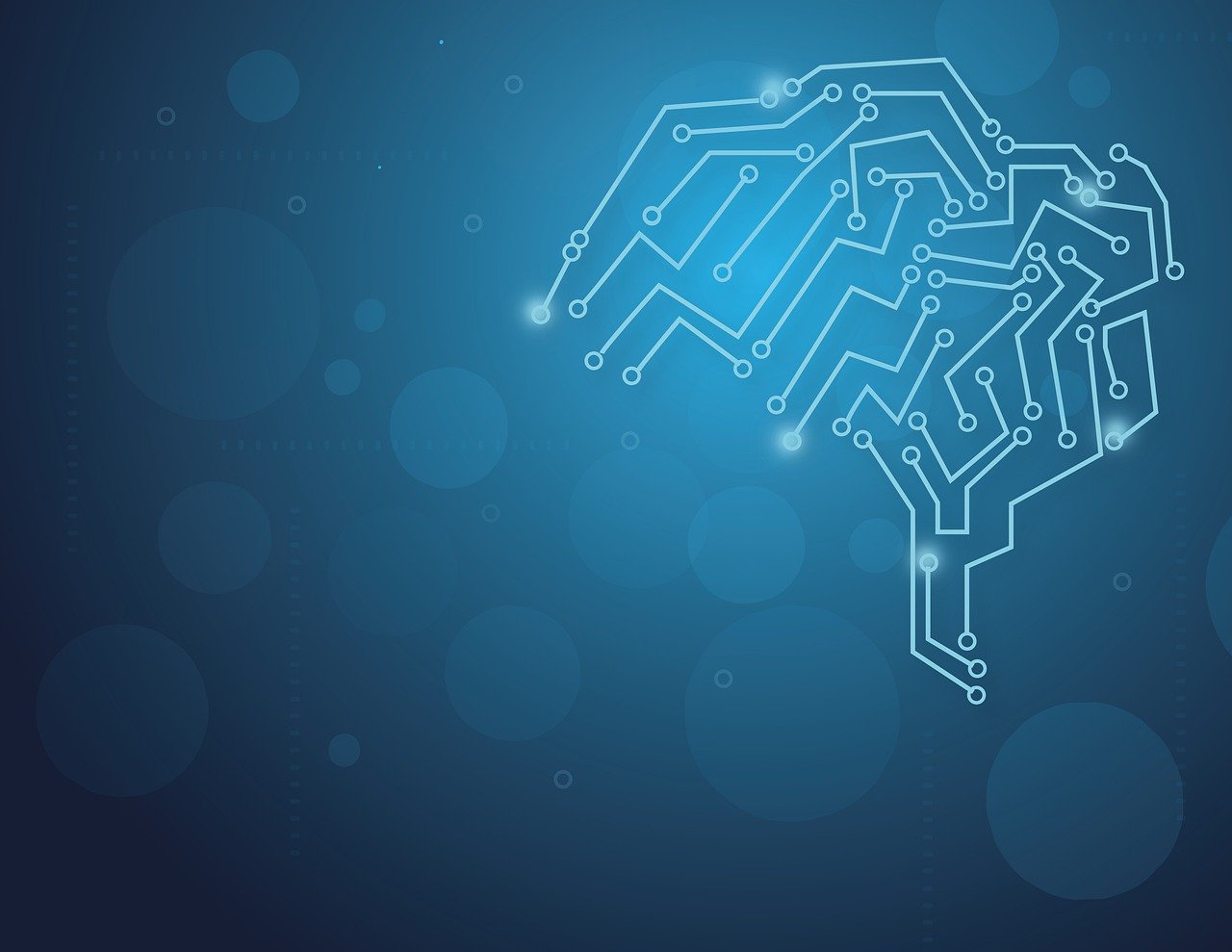
Swarm Intelligence
Swarm intelligence is a captivating phenomenon observed in nature, where simple agents, such as insects or birds, exhibit complex behaviors through collective actions. Imagine a flock of birds soaring gracefully in the sky, each individual seemingly following its own instincts while contributing to the mesmerizing choreography of the group. This phenomenon isn't just beautiful; it's a testament to how individual actions can lead to remarkable outcomes when aligned with a common purpose. Swarm intelligence operates on the principle that local interactions among individuals can lead to the emergence of global patterns and efficiencies, showcasing how cooperation and communication can yield superior results compared to solitary efforts.
One of the most striking examples of swarm intelligence can be seen in ant colonies. Ants, despite their tiny size and limited cognitive abilities, work together to accomplish tasks that would be impossible for a single ant. For instance, when foraging for food, ants leave pheromone trails that guide others to resources. This simple yet effective method of communication allows the colony to efficiently exploit food sources, optimizing their foraging strategy in real-time. The collective decision-making process in such scenarios is often more effective than that of any single ant, illustrating the power of collaboration.
The concept of swarm intelligence has transcended biology and found applications in various fields, including robotics and computer science. Researchers have developed algorithms inspired by these natural systems to solve complex problems. For instance, algorithms based on the behavior of swarming birds can optimize routes for delivery trucks or enhance the performance of search engines. By mimicking the decentralized decision-making processes of swarms, these technologies can adapt and evolve, leading to innovative solutions that traditional methods might not achieve.
Moreover, swarm intelligence highlights the importance of diversity within a group. In nature, the more diverse a swarm, the better it can adapt to changing environments. This principle has profound implications for human organizations and communities. By fostering diversity and encouraging collaboration, we can harness the collective intelligence of groups to tackle challenges more effectively. Just as a diverse swarm of birds can navigate through unpredictable weather, a diverse team can navigate the complexities of modern problems, leading to creative solutions that benefit everyone involved.
To further illustrate the mechanisms of swarm intelligence, consider the following table that compares the characteristics of swarm intelligence in nature versus its applications in technology:
| Aspect | Swarm Intelligence in Nature | Swarm Intelligence in Technology |
|---|---|---|
| Agents | Insects, birds, fish | Robots, algorithms, software |
| Communication | Pheromones, visual signals | Data sharing, network protocols |
| Decision-Making | Decentralized, local interactions | Distributed systems, collaborative filtering |
| Adaptability | High, responsive to changes | Dynamic, learns from data |
In conclusion, swarm intelligence is more than just a natural curiosity; it's a powerful concept that can inspire innovative solutions across various domains. By studying how nature's simplest creatures collaborate, we can unlock new ways of thinking about problem-solving and group dynamics. As we continue to explore and apply these principles, the potential for harnessing collective intelligence grows, promising exciting advancements in technology and society.
- What is swarm intelligence? Swarm intelligence refers to the collective behavior of decentralized, self-organized systems, often observed in nature, where simple agents interact locally to produce complex global behaviors.
- How does swarm intelligence work in nature? In nature, organisms like ants and birds communicate through simple signals, leading to coordinated group actions that enhance survival and efficiency.
- What are some applications of swarm intelligence in technology? Swarm intelligence principles are used in robotics, optimization algorithms, and artificial intelligence to solve complex problems through decentralized decision-making.
- Why is diversity important in swarm intelligence? Diversity allows swarms to adapt to changing environments more effectively, leading to better problem-solving and innovation in both natural and human systems.

Collective Behavior in Social Animals
When we think about collective behavior in social animals, it's hard not to be amazed by the intricate ways they work together. From the mesmerizing movements of fish in a school to the synchronized patterns of birds in flight, these behaviors are not just random acts of nature but rather a sophisticated dance of survival and efficiency. Social animals, such as wolves, elephants, and even ants, exhibit behaviors that highlight the power of teamwork. They rely on each other for protection, food, and even raising their young. This interconnectedness emphasizes a fundamental truth: together, they can achieve much more than they could alone.
One fascinating aspect of this collective behavior is how it enhances survival. For instance, consider the way a herd of wildebeests moves. When threatened by predators, they don’t scatter randomly; instead, they form a tight-knit group, making it harder for predators to pick out a single target. This strategy not only protects individuals but also increases the chances of survival for the entire group. Similarly, in the case of bees, their collective decision-making in foraging for food is a prime example of how social animals can optimize their resources. They communicate through dances, sharing information about the best flower patches, which leads to more efficient foraging.
Moreover, the dynamics of social structures in these animal communities are incredibly complex. For instance, in wolf packs, hierarchies play a crucial role in their social interactions. The alpha wolves lead the pack, but it’s the cooperation among all members that enhances their hunting success. This hierarchy is not just about dominance; it’s about ensuring that everyone plays a role in the survival of the pack. Such structured interactions can be compared to a well-orchestrated team in human sports, where each player has a specific role that contributes to the overall success of the game.
Interestingly, collective behavior is not just limited to large mammals. Even smaller creatures, like ants, demonstrate remarkable teamwork. Ant colonies operate with a division of labor that allows them to build intricate nests, forage for food, and defend their territory. Each ant plays a specific role, whether as a worker, soldier, or queen, and their collective efforts lead to the success of the colony. This is a perfect illustration of how individual actions contribute to a greater goal, emphasizing the idea that every member, no matter how small, is vital to the community's success.
Understanding collective behavior in social animals not only fascinates scientists but also provides insights into our own human behaviors. As we analyze these natural systems, we can draw parallels to human social structures and interactions. For example, just like ants and bees, humans often rely on collaboration to solve complex problems. The study of these behaviors can inspire innovative solutions to challenges we face in society, such as climate change and resource management.
In conclusion, the collective behavior of social animals showcases the incredible power of working together. It teaches us valuable lessons about cooperation, communication, and the importance of community. As we continue to explore these fascinating dynamics, we can apply these insights to enhance our understanding of human interactions and foster a more collaborative society.
- What is collective behavior in social animals?
Collective behavior refers to the ways in which social animals interact and work together to achieve common goals, often enhancing their survival and efficiency. - How does collective behavior benefit social animals?
It allows them to protect themselves from predators, efficiently gather resources, and improve their chances of survival through teamwork. - Can humans learn from collective behavior in social animals?
Absolutely! Studying these behaviors can provide insights into cooperation and community dynamics, which can be applied to human social structures and problem-solving.

The Future of Collective Intelligence
The future of collective intelligence is a thrilling frontier, teeming with possibilities that could reshape our society in profound ways. As technology continues to advance at an unprecedented pace, the potential for harnessing collective intelligence—both human and artificial—grows exponentially. Imagine a world where individuals from diverse backgrounds collaborate seamlessly, pooling their knowledge and insights to solve complex problems that once seemed insurmountable. This isn't just a dream; it's a tangible reality on the horizon.
One of the most exciting aspects of this future is the integration of artificial intelligence with collective intelligence systems. Picture AI as a powerful ally, analyzing vast amounts of data and identifying patterns that humans might overlook. This synergy could revolutionize decision-making processes in various fields, from healthcare to environmental sustainability. For instance, AI could assist in aggregating public opinions on critical issues, providing policymakers with a clearer understanding of societal needs and preferences.
However, as we embrace this future, we must also navigate a landscape filled with challenges and ethical considerations. The very tools that empower collective intelligence can also lead to pitfalls such as misinformation and groupthink. The risk of echo chambers, where individuals only hear views that reinforce their own, is a significant concern. Therefore, fostering an environment that encourages diverse perspectives and critical thinking becomes paramount. It’s essential to develop frameworks that ensure the integrity of collective intelligence systems, protecting them from manipulation and bias.
To illustrate the potential impacts of collective intelligence on various sectors, consider the following table:
| Sector | Potential Impact | Examples |
|---|---|---|
| Healthcare | Improved diagnosis and treatment through shared data | Telemedicine platforms enabling crowd-sourced medical insights |
| Environmental Science | Enhanced data collection for climate change solutions | Crowdsourced environmental monitoring apps |
| Education | Collaborative learning environments | Online platforms that connect learners globally for shared knowledge |
As we stand on the brink of this new era, it’s crucial to remain vigilant about the ethical implications of our advancements. We must ask ourselves: How can we ensure that collective intelligence serves the greater good? How do we balance innovation with responsibility? Engaging in these conversations will be vital as we shape the future of collective intelligence and its role in our lives.
In conclusion, the future of collective intelligence is bright, filled with promise and potential. By leveraging technology responsibly and fostering an inclusive environment for collaboration, we can unlock the full power of our collective intelligence. The journey ahead may be challenging, but the rewards—greater innovation, improved decision-making, and enhanced societal well-being—are well worth the effort.
- What is collective intelligence? Collective intelligence refers to the shared or group intelligence that emerges from collaboration and competition among individuals.
- How can artificial intelligence enhance collective intelligence? AI can analyze large datasets and identify patterns, helping groups make informed decisions more effectively.
- What are the risks associated with collective intelligence? Risks include misinformation, groupthink, and the potential for echo chambers that limit diverse perspectives.
- How can we mitigate the challenges of collective intelligence? By promoting critical thinking, encouraging diverse viewpoints, and developing ethical frameworks for technology use.

Impacts of Artificial Intelligence
Artificial Intelligence (AI) is not just a buzzword; it’s a transformative force that is reshaping the landscape of collective intelligence. Imagine a world where machines can analyze vast amounts of data faster than any human could, uncovering patterns and insights that remain hidden to the naked eye. This is the power of AI, and its integration with collective intelligence systems could lead to revolutionary advancements in decision-making processes. But what does this really mean for us?
At its core, the fusion of AI and collective intelligence can enhance our ability to solve complex problems. For instance, in fields like healthcare, AI can analyze patient data from numerous sources, allowing medical professionals to make informed decisions that are backed by comprehensive insights. This collaboration not only speeds up diagnosis but also improves treatment outcomes. Furthermore, AI can help identify trends in public health data, enabling proactive measures to combat potential outbreaks.
Moreover, AI can facilitate real-time collaboration among diverse groups, allowing for a more dynamic approach to problem-solving. Imagine a team of scientists, researchers, and engineers working together, each contributing their unique expertise. AI can synthesize their inputs, highlighting the most viable solutions while also considering ethical implications. This collaborative environment fosters innovation and creativity, driving advancements in various sectors such as technology, education, and environmental science.
However, while the benefits are promising, the integration of AI into collective intelligence systems also raises several ethical considerations. For instance, the reliance on AI can lead to biases in decision-making processes if the underlying data is flawed or unrepresentative. It’s crucial to ensure that AI systems are transparent and accountable, preventing the perpetuation of existing inequalities. This is where the concept of responsible AI comes into play. Organizations must prioritize ethical standards to mitigate risks associated with AI deployment.
In addition, the potential for misinformation is a significant concern. As AI systems become more sophisticated, the risk of generating misleading information increases. This can lead to groupthink, where individuals conform to a consensus without critically analyzing the information presented. To combat this, it is essential to foster a culture of critical thinking and open dialogue within groups. Encouraging diverse perspectives can help counteract the effects of misinformation and promote a more nuanced understanding of complex issues.
Ultimately, the impacts of artificial intelligence on collective intelligence are profound and multifaceted. As we stand on the brink of this new era, it’s essential to embrace the opportunities while remaining vigilant about the challenges. Will we harness AI to create a more equitable and informed society, or will we allow it to exacerbate existing divides? The choice lies in our hands.
- What is collective intelligence? Collective intelligence refers to the shared or group intelligence that emerges from collaboration and competition among individuals.
- How does AI enhance collective intelligence? AI enhances collective intelligence by analyzing large datasets quickly, facilitating real-time collaboration, and providing insights that inform decision-making.
- What are the ethical implications of combining AI with collective intelligence? Ethical implications include the risk of bias in decision-making, the potential for misinformation, and the need for transparency and accountability in AI systems.
- Can collective intelligence help in addressing global challenges? Yes, collective intelligence can significantly contribute to solving global challenges by harnessing diverse perspectives and innovative solutions.
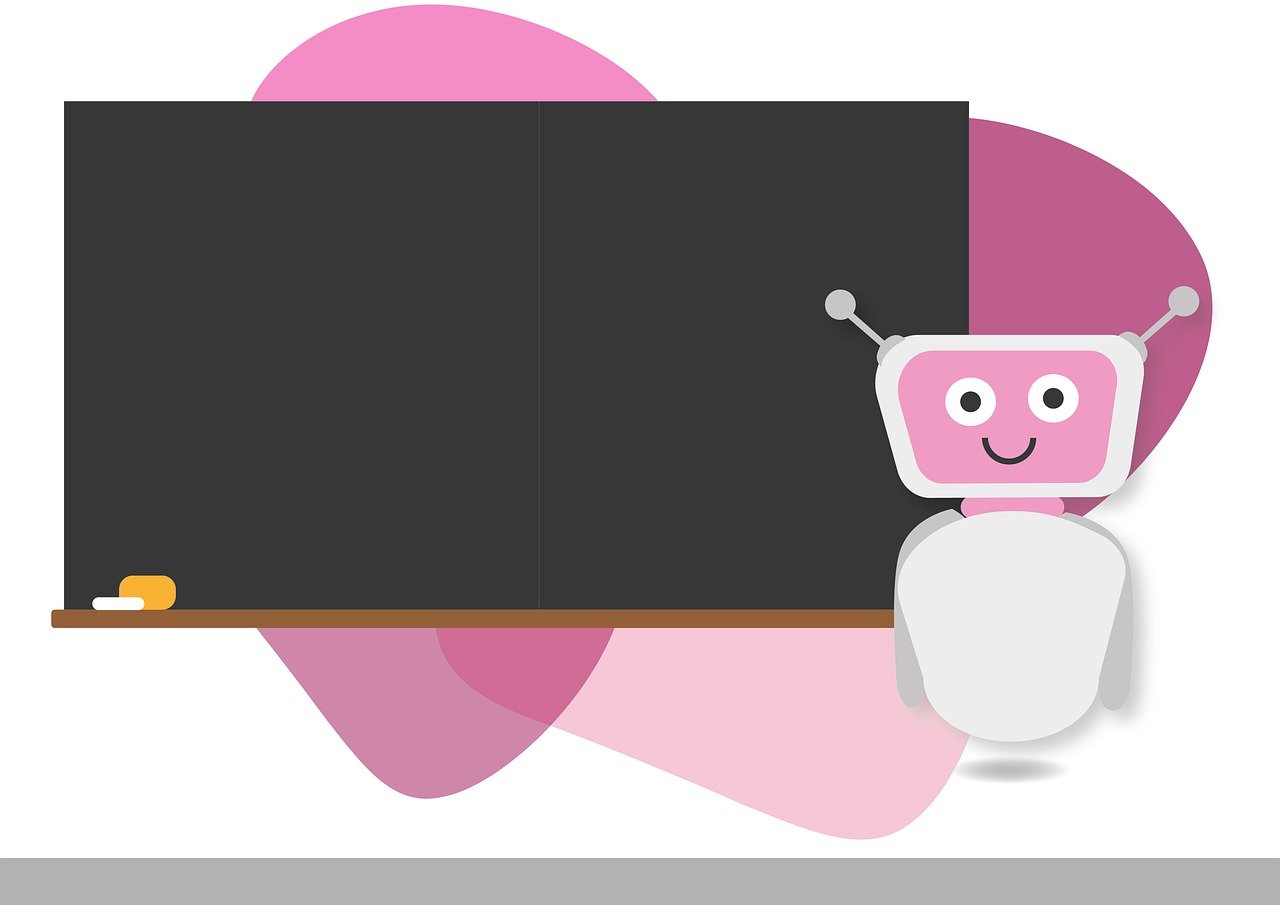
Challenges and Ethical Considerations
As we dive deeper into the realm of collective intelligence, we can't overlook the challenges and ethical considerations that accompany its growth and application. While the potential benefits of harnessing collective intelligence are vast, they also come with a set of complications that can significantly impact both individuals and society as a whole. One of the most pressing issues is the risk of misinformation. In a world where information spreads like wildfire, the collective decision-making process can easily be swayed by false narratives, leading to misguided conclusions. Think of it like a game of telephone; one small distortion at the beginning can lead to a wildly different message by the end.
Moreover, the phenomenon of groupthink poses a significant threat to the effectiveness of collective intelligence. When individuals prioritize harmony and consensus over critical thinking, the group can arrive at decisions that are not only flawed but potentially harmful. This can be particularly dangerous in high-stakes situations, such as in political or corporate environments where the consequences of poor decision-making can have far-reaching effects. It’s essential to foster an environment that encourages healthy debate and values diverse perspectives to mitigate this risk.
Another ethical consideration revolves around privacy concerns. As organizations increasingly rely on collective intelligence, they often gather vast amounts of data from individuals. This raises questions about how this data is used, who has access to it, and how it is protected. Are we sacrificing our privacy for the sake of progress? It's a delicate balance that needs careful navigation. Transparency and accountability must be at the forefront of any collective intelligence initiative to build trust among participants.
To further illustrate these challenges, consider the following table that outlines some of the key ethical dilemmas associated with collective intelligence:
| Challenge | Description |
|---|---|
| Misinformation | The spread of false information can distort collective decision-making. |
| Groupthink | The tendency for group members to conform, leading to poor decisions. |
| Privacy Concerns | Issues surrounding the collection and use of personal data. |
| Manipulation | The potential for individuals or groups to exploit collective intelligence for personal gain. |
In conclusion, while collective intelligence holds remarkable potential for innovation and problem-solving, it is imperative that we approach its application with caution. Addressing these challenges is not merely an option; it is a necessity. By fostering an environment of transparency, encouraging diverse opinions, and safeguarding individual privacy, we can harness the power of collective intelligence responsibly. So, as we move forward, let’s ask ourselves: How can we ensure that the collective intelligence we cultivate truly benefits society without compromising our values?
- What is collective intelligence? Collective intelligence refers to the shared or group intelligence that emerges from collaboration and competition among individuals.
- What are the main challenges of collective intelligence? Key challenges include misinformation, groupthink, privacy concerns, and the potential for manipulation.
- How can we mitigate the risks associated with collective intelligence? By fostering transparency, encouraging diverse opinions, and safeguarding individual privacy, we can responsibly harness collective intelligence.
- Is collective intelligence always beneficial? While it has great potential, collective intelligence can lead to poor decision-making if not managed properly.
Frequently Asked Questions
- What is collective intelligence?
Collective intelligence is the shared or group intelligence that emerges from the collaboration and competition among individuals. It highlights how groups can come together to solve problems more effectively than individuals working alone.
- How does collective intelligence differ from individual intelligence?
While individual intelligence refers to the cognitive abilities of a single person, collective intelligence relies on the pooling of knowledge, skills, and insights from a group. It's like a potluck dinner where everyone brings their best dish, creating a feast that's richer than any single meal!
- Can you give examples of collective intelligence in nature?
Absolutely! Nature is full of examples, such as ant colonies working together to find food, or flocks of birds that move in unison. These natural systems demonstrate how simple rules can lead to complex and efficient group behaviors that enhance survival.
- What role does technology play in collective intelligence?
Technology has significantly advanced the applications of collective intelligence, especially in fields like artificial intelligence and crowdsourcing. For instance, platforms like Wikipedia utilize collective contributions to create a vast repository of knowledge, proving that many minds can indeed produce something great!
- What are the psychological factors affecting collective intelligence?
Psychological factors such as group dynamics, social influence, and individual cognition play a crucial role in shaping collective intelligence. These elements can either enhance or hinder the effectiveness of a group's decision-making process.
- What are the potential future trends in collective intelligence?
The future of collective intelligence is exciting, with trends pointing towards greater integration with artificial intelligence. This could lead to enhanced decision-making processes, but it also raises ethical considerations that we must navigate carefully.
- What challenges does collective intelligence face?
Despite its benefits, collective intelligence faces challenges such as misinformation and groupthink. It's essential to be aware of these pitfalls to harness the true potential of collective intelligence without falling prey to its downsides.
- How can collective intelligence be applied in everyday life?
Collective intelligence can be applied in various ways, from collaborative problem-solving in workplaces to community-driven initiatives. By leveraging the strengths of a group, we can tackle challenges more effectively and innovate in our daily lives.



